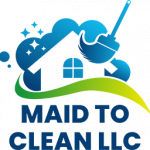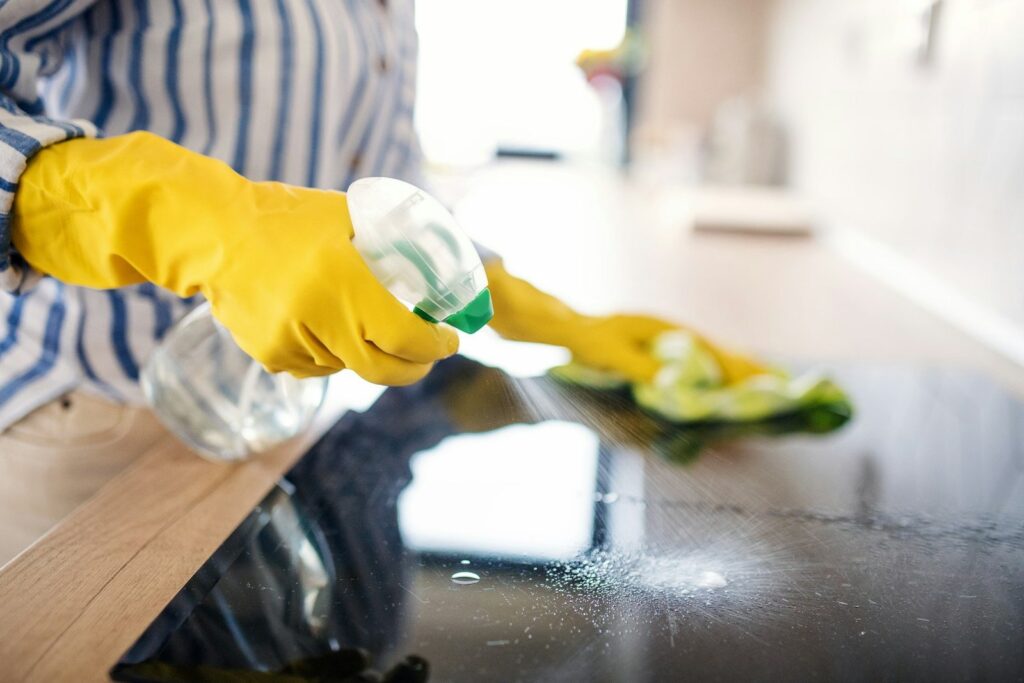Creating a Safe and Healthy Home: Essential Cleaning Protocols
A clean home is more than just a tidy appearance—it’s about creating a safe and healthy living space for you and your family. From choosing the right cleaning protocols to ensuring a safe home environment, there’s a lot to consider when keeping your space in tip-top shape. With eco-friendly cleaning increasingly becoming the go-to choice, Maid To Clean LLC is here to help you navigate these essential steps. Whether you’re a busy professional, a family juggling multiple schedules, or a senior looking for some extra help, our services are tailored to meet your needs. Reach out today for a free quote and let us show you how simple maintaining a healthy home can be! 🏡✨
Choosing Eco-Friendly Cleaning Products
Selecting eco-friendly cleaning products can significantly impact your home’s safety and health. With a push towards sustainable living, these products offer numerous benefits over traditional ones. It’s important to understand what makes a product eco-friendly and how to read labels effectively.
Benefits of Eco-Friendly Choices
Eco-friendly cleaning products are preferable to traditional cleaners for several reasons. First, they often contain fewer toxic chemicals, making them safer for children and pets. This reduces the risks of allergies and respiratory issues. Second, they are better for the environment since they typically use biodegradable ingredients that don’t pollute waterways.
Another important aspect is their packaging. Many eco-friendly products use recyclable materials, contributing to less waste. Real-world examples show that households using eco-friendly products report fewer health issues related to air quality.
Key insights:
Eco-friendly products reduce environmental impact.
Safer for indoor air quality and overall health.
Consider switching to these products by checking their effectiveness and affordability. 🌿
Understanding Product Labels
Reading product labels can be overwhelming, but it’s crucial to ensure you’re making the right choice. Start by identifying key phrases such as “biodegradable,” “non-toxic,” and “phosphate-free.” These are indicators of safer options.
Look for certifications, such as Green Seal or EcoLogo, which guarantee the product meets environmental standards. It’s also helpful to understand ingredient lists. Ingredients like ammonia or bleach can be harsh and are less likely to be found in eco-friendly cleaners.
Check for certification logos.
Identify harmful chemicals.
Prioritize biodegradable ingredients.
By understanding labels, you can confidently choose products that align with eco-friendly cleaning practices recommended by Cleaning Institute.
Essential Cleaning Protocols for a Safe Home
Cleaning routines form the backbone of maintaining a safe home. By incorporating daily, weekly, and deep cleaning strategies, you can effectively reduce health risks and ensure a hygienic living environment.
Daily and Weekly Routines
Daily cleaning routines focus on high-touch areas like countertops and doorknobs. This helps prevent bacteria buildup. A simple practice is to wipe down these surfaces with a damp cloth or eco-friendly disinfectant.
Weekly routines might include vacuuming carpets and mopping floors. These actions can further reduce allergens and keep dirt from accumulating. According to Healthline, frequent cleaning decreases the likelihood of mold growth.
Wipe surfaces daily.
Vacuum and mop weekly.
Focus on high-traffic areas.
Regular cleaning is essential to a healthy home, offering a proactive approach to hygiene. 🧹
Deep Cleaning Strategies
Deep cleaning involves targeting neglected areas and should be done monthly or seasonally. This process might include cleaning behind appliances, washing windows, and scrubbing grout lines. These tasks require more time but are crucial for a thorough clean.
Schedule seasonal deep cleans.
Focus on neglected areas.
Rotate tasks to manage workload.
By following a structured deep-cleaning protocol, you can tackle areas often missed in daily routines. Refer to the Washington State Department of Health for comprehensive cleaning practices.
Promoting a Healthy Home Environment
Creating a healthy home environment goes beyond cleaning. It involves reducing allergens, managing clutter, and ensuring fresh air circulation, all contributing to overall well-being.
Reducing Allergens and Bacteria
Maintaining a healthy home requires minimizing allergens and bacteria. Regular dusting and vacuuming are key to controlling dust mites. Use HEPA filters for more effective allergen control. Wash bedding weekly in hot water to eliminate dust mites and bacteria.
A study highlighted by NCHH shows that homes practicing these methods see a significant decrease in allergy symptoms.
Dust and vacuum regularly.
Use HEPA filters.
Wash bedding in hot water.
By implementing these practices, you can foster a healthier home environment. 🌬️
Organizing and Decluttering Tips
Decluttering contributes to a healthier home by reducing stress and making cleaning more efficient. Start by categorizing items into keep, donate, and discard piles. This process makes it easier to manage possessions and maintain organized spaces.
Key strategies:
Tackle one room at a time.
Implement storage solutions.
Regularly review and declutter.
By maintaining an organized home, you enhance both function and aesthetics. For more tips on creating a clutter-free environment, visit Cleaning Institute.
Effective organization and regular cleaning routines create a safe, healthy home. Keep these protocols in mind to enjoy a harmonious living space. 📦





